New WW2 rail disaster information found 80 years on
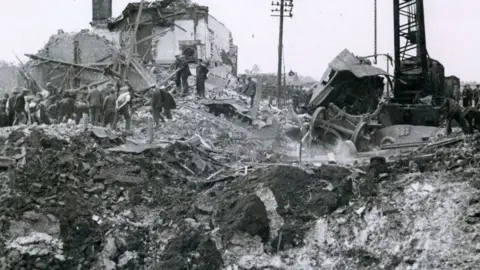 Soham Museum
Soham MuseumNew evidence about what happened when a World War Two munitions wagon exploded is still being discovered 80 years after the event, according to an historian.
The train was travelling through Soham, Cambridgeshire, on 2 June 1944 when the wagon packed with bombs caught fire, but only two people were killed due to the brave actions of its driver, fireman and guard.
Donna Martin said a recently donated fire service log revealed firefighters initially spent an hour tackling a blaze at the town's gas works, not realising it was caused by "something down the line".
The town is marking the disaster's 80th anniversary with a church service and the pealing of bells.
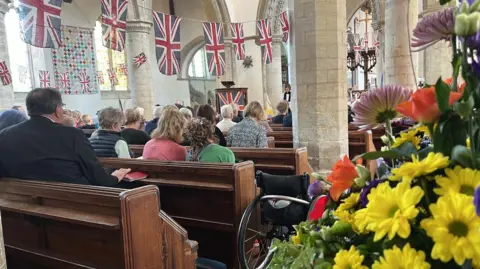 Richard Knights/BBC
Richard Knights/BBC Donna Martin
Donna MartinMrs Martin, from Soham Museum, said: "We didn't know about the gas explosion until after the 75th anniversary, when the Soham Fire Service's logs were donated to us.
"When the explosion happened, the gas works and some of the houses nearby caught fire, and what is very revealing is the log shows firemen calling in to the main base at Newmarket about the gas main for the first hour."
The munitions exploded at 01:45 BST on a warm, moonlit night, with a detonation heard as far away as Cambridge, about 20 miles (32km) south west of Soham.
The log revealed firefighters were called to the gas works blaze at 01:51, but it was not until 02:51 they reported an "ammunition train on railway: engine wrecked about 100 yards (91m) distance".
Mrs Martin believes it was only at this point firefighters realised the cause and scale of the disaster.
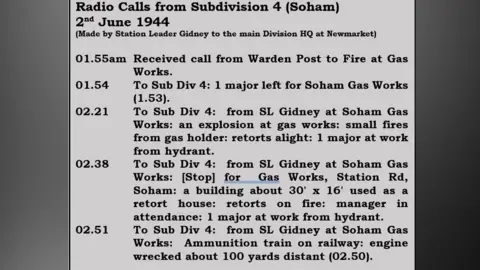 Soham Museum
Soham Museum Richard Knights/BBC
Richard Knights/BBCDriver Benjamin Gimbert and fireman James Nightall were staffing the 51-wagon train, 44 of which were packed with 250lb (113kg) and 500lb (226kg) bombs.
Mr Nightall got out of the engine and, with train guard Herbert Clarke, uncoupled the blazing munitions wagon from the rest, in a bid to drive it out of town.
Mr Nightall and signalman Frank Bridges were killed when the bombs went off.
Mrs Martin said: "It takes one 125lb (56kg) bomb to demolish a 20-story tower block.
"22,000lb (9.8 tonnes) of explosives went off when that one wagon exploded."
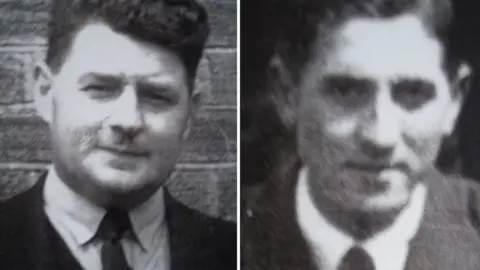 Soham Museum
Soham Museum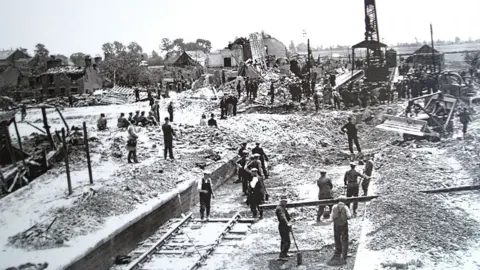 Soham Museum
Soham MuseumThirteen homes were demolished, many people were injured and repairs to the 800 damaged buildings went on for three years, but it was likely the town would have been destroyed if the men had not acted the way they did.
Mr Nightall and Mr Gimbert were awarded the George Cross for their efforts.
"Every time we mark the anniversary, more people come forward with information," said Mrs Martin, who gives regular talks about the disaster across East Anglia.
In the next couple of years she plans to investigate further a suggestion the explosion was caused by sabotage.
The service at St Andrew's Church is at 10:00 BST and a full peal of bells will be rung at 14:45.
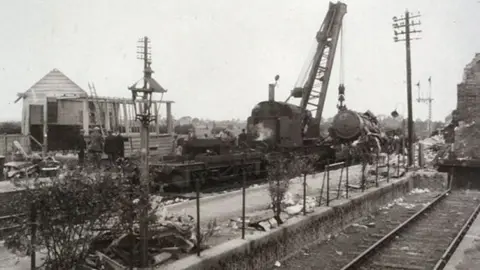 Soham Museum
Soham MuseumFollow Cambridgeshire news on Facebook, Instagram and X. Got a story? Email [email protected] or WhatsApp us on 0800 169 1830
